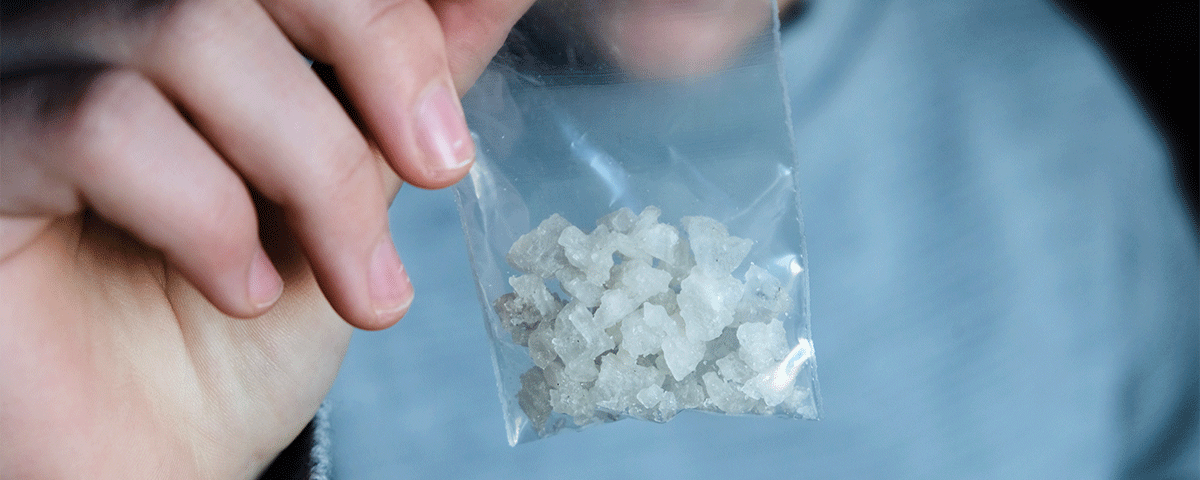Can meth cause seizures? Can meth cause cancer? Can meth cause schizophrenia? Meth, or crystal meth, is short for crystal methamphetamine, an addictive and illegal stimulant drug.
Methamphetamine comes in the form of a white crystalline substance that people can ingest by either snorting, smoking, or injecting it. All forms of taking meth can produce a false sense of euphoria, confidence, and well-being. Long-term use of meth can also lead to addiction and a variety of other issues. As a drug rehab in Palm Springs, CA, we know that many meth myths and facts become distorted by new or recurring drug trends. We’re debunking some of these common crystal meth myths and sharing the truth behind this dangerous illicit drug.
Five Interesting Meth Facts and Myths
Myth #1: Crystal Meth Can Cause Cancer
Fact: Meth is a central nervous system (CNS) stimulant with well-known toxic effects on the brain and liver, although no distinct correlation between meth and cancer has been found. There is some evidence, however, suggesting that meth can damage DNA in people. Research also shows that meth can even oxidize DNA, which can lead to mutation. Findings also support the idea that assumptions related to meth’s ability to cause cancer and other adverse side effects in long-term users are often related to DNA damage.1
Additionally, meth users are also at high risk for cancer because of its cutting agents or additives used by dealers and meth labs to create more products for less money. Meth cutting agents often include various household chemicals and cleaning products – like benzene – that are known to cause cancer in people. Users who abuse meth intravenously also increase their risk of contracting diseases like hepatitis B and hepatitis C due to sharing or using dirty needles. Care like our meth treatment in California is the best way to avoid addiction and all of the other adverse health effects that this drug can cause.
Myth #2: Meth Helps You Socialize
Fact: One of the most interesting facts about methamphetamine is that it doesn’t always help with socializing. A common side effect of meth is increased sociability. Since the beginning of meth’s history, people have used it to “loosen up” and have fun in social settings. Like other stimulants, meth creates a false sense of confidence and well-being. Users become more energetic, alert, and social. However, self-perception is distorted when a person is high on crystal meth. Instead of sociability, users may become erratic without notice. Some long-time meth users even develop psychotic disorders, which can damage relationships and actually worsen sociability.
Myth #3: A Meth High Can Last For Days
Fact: “How long does a meth high last?” is a common question when it comes to drug use in general. Many drug addicts began using drugs to experience the high they produce, and it’s this feeling of euphoria and well-being that often brings people back into drug abuse. Despite what you may have heard or seen in movies and shows, a meth high only lasts for about 6 to 12 hours, which is why long-time meth users often go on multi-day meth benders to remain feeling this way. People who go on meth benders ingest more when the high wears down, which may come out to 2 or 3 times per day. People who have developed a strong tolerance to meth are more likely to go on benders because they need more of the drug to feel high, increasing the risk of health complications like meth mouth, skin picking, and overdose.
Myth #4: Meth Enhances Sex
Fact: One of the many meth addiction facts that may surprise people is that meth isn’t as beneficial to a person’s sex life as it’s made out to be. Like other CNS stimulant drugs, methamphetamine can increase your sex drive and enhance your libido or desire for sexual activity. Meth abuse is prevalent among men in the LGBTQ+ community to enhance sex and performance during a practice called party-n-play, or PnP. In 2015, past-year meth use was four times higher among gay men compared to straight men (4.1% versus 0.9%).2 However, heterosexual people also used meth for this particular reason.
The problem is that meth actually produces sexual issues that can cancel out its libido-enhancing effect. Long-term meth addiction can lead to poor sexual performance and increases your likelihood of engaging in unsafe sexual behavior, which is why meth is known to contribute to HIV transmission. Specifically, meth can induce erectile dysfunction, which, of course, makes it difficult for men to perform sexually. Crystal meth also causes erotic thoughts and pictures that can dull a person’s desire for genuine sexual arousal.
Myth #5: Meth Users Can’t Recover
Fact: Although a person can’t be cured of a crystal meth addiction, they can recover their physical health and brain function with meth detox, treatment, and therapy. The misconception behind a meth user’s inability to recover their sobriety is based on the drug’s impact on brain function. Methamphetamine can change brain structure and create a chemical imbalance in the brain. This drug creates a high by acting on dopamine receptors and damages areas of the brain, including gray matter, the frontal lobe, and more. Long-term meth use can also change the brain’s protein levels and metabolism, making it more reliant on the drug to function. While all of these things can negatively impact the brain, meth users can recover.
The opioid epidemic often takes precedence over other drug-related issues, but that doesn’t mean there aren’t other substances causing problems in the nation. According to the Substance Abuse and Mental Health Services Administration, the estimated number of people with meth use disorders in the United States increased by more than 45 percent from 2016 to 2018, from 684,000 to over 1 million.3
Regardless of any crystal meth myths and facts out there, this remains true: crystal meth is a dangerous drug, and everyone who’s addicted to it deserves help. If you or a loved one is battling meth addiction or any other substance use disorder, call Banyan Palm Springs now at 888-280-4763 for more information about our California drug treatment programs.
Source:
- NIH - Methamphetamine ("crystal meth") causes induction of DNA damage and chromosomal aberrations in human-derived cells
- SAMHSA - Sexual Orientation and Estimates of Adult Substance Use and Mental Health: Results from the 2015 National Survey on Drug Use and Health
- SAMHSA - Key Substance Use and Mental Health Indicators in the United States: Results from the 2016 National Survey on Drug Use and Health
Related Reading:









